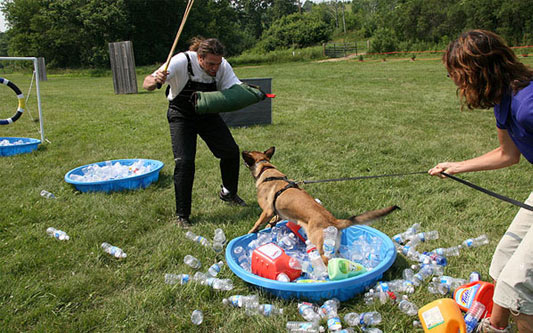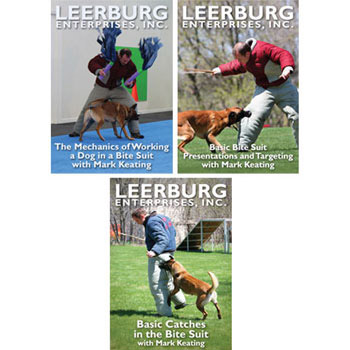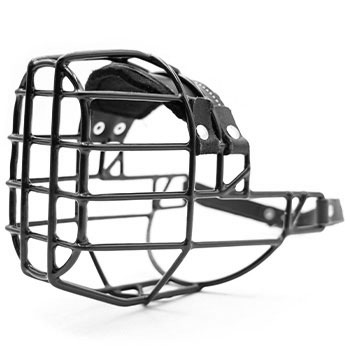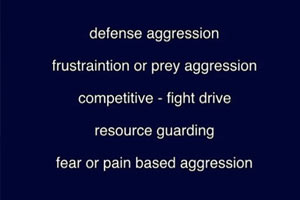Understanding Fight Drive or Competitive Aggression: What is it?

We get training questions through our Ask Cindy portal every day. A lot of these questions concern people who think they have dominant and aggressive dogs.
Many dogs do have aggression problems but very very few dogs have aggression that manifests itself through dominance. That is because there are very few truly dominant dogs.
This blog post came about because I am in the middle of reproducing a DVD I first produced back in 2005 titled Dealing with Dominant and Aggressive Dogs. I've since created an online course by the same name that has over 19 hours of detailed lecture.
For as long as I have studied dog aggression and protection work for biting dog sports or police service dogs (almost 50 years), the term "FIGHT DRIVE" has been used to describe the kind of aggression looked for in a biting sport dog and needed in police K9 or military patrol dogs.
Understanding dog aggression is not a simple topic. In addition, fight drive has always been a difficult trait for new trainers to wrap their minds around.
Recently a friend coined the term "competitive aggression" to refer to what I have always called "fight drive". In a way, this new term, competitive aggression, makes it easier for new dog trainers to understand.
It needs to be said that very few dogs have fight drive. When a dog does have fight drive, it is brought out when a decoy pressures the dog during bite work.
These dogs are very self-confident. The harder a decoy pushes the dog in bite work the more that dog accepts the challenge of the fight. In other words, the dog sees the decoy as a fighting partner and readily accepts a decoy's challenge. These dogs look at the bite work as a true fight.
While these dogs are working to defend themselves they are not working out of defensive fear (fight or flight) or prey drive. Most sport dogs work in prey drive. That is a topic for a different post.
Fight drive dogs see and accept the decoy as a fighting partner. They look at the decoy as a challenger and want to defeat him (or her) in a fight. In other words, the dog intends to dominate the decoy.
Fight drive evolves through the protection training process. It is not seen in puppies, it is not seen in young adults. It comes about with adult dogs that have gone through a good protection training program and it develops with maturity.
It should be said that just because the dog wants to dominate the decoy during bite work does not necessarily mean that the same dog tries to dominate their owner. There are no rules in dog training so I will also say some fight drive dogs may try and dominate people. This often happens because of poor management from the people who own them.
I have owned a lot of dogs trained in bite work in my life. Only a few had serious fight drive. When one sees a dog working in fight drive it becomes obvious.
I compare a dog with fight drive to a racehorse that isn't just running but rather a horse that sees the race as a challenge and needs to run faster than all the other horses that are running with it. These horses recognize the challenge of the race. Just as a fight drive dog sees bite work as a challenge.
It needs to be said that just because a dog can be trained to do bite work in IPO or one of the ring sports or PSA and sadly to say in police work this does not mean that dog has fight drive.
In fact, the vast majority of biting sport dogs and frankly many police service dogs DO NOT have fight drive. They are doing bite work strictly through prey drive or possibly defensive drive.
Fight drive is not a form of aggression civilians will see in a family pet. Simply because family pets are not trained to fight, nor are they put in a position where they feel they are in a fight with their owners.











Ask Cindy.